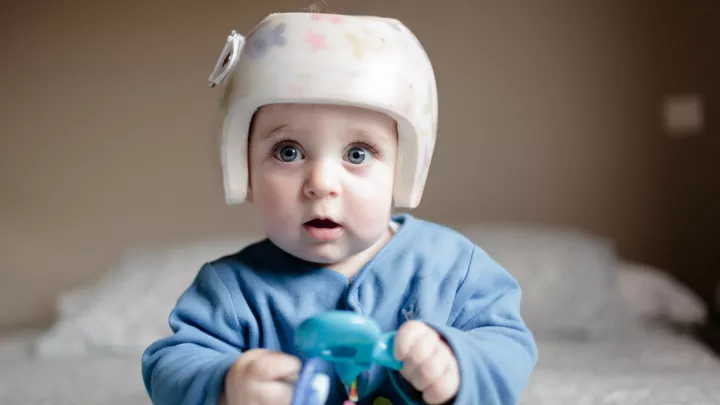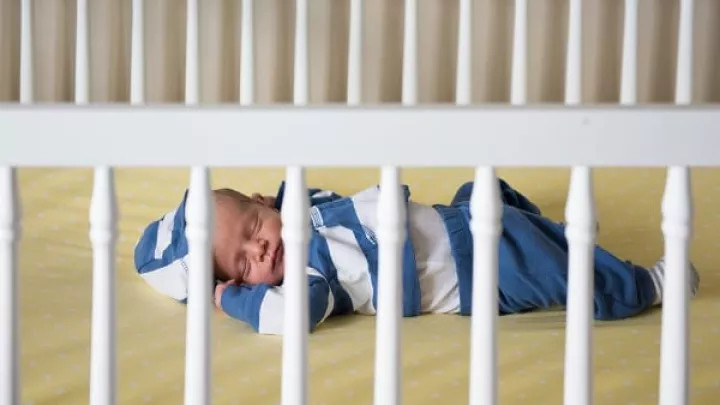
Does Your Baby Have Plagiocephaly?
Have you ever noticed that your child has an assymetrical head shape or flatness on the back of his or her head? Do you think that this is typical and that all children have a flat spot from sleeping on their backs? This is actually atypical, and may be diagnosed by a doctor as plagiocephaly. Although a diagnosis of plagiocephaly may be alarming, it is usually only an asthetic change, with no research to suggest that it has any effect on brain development.
What is plagiocephaly?
Plagiocephaly, also referred to as deformational or positional plagiocephaly, is a common condition characterized by a flat spot on your baby’s head. It is often associated with other asymmetries of the head and face, including:
- Prominent or sloping forehead
- One ear shifted forward
- One cheek appearing fuller
- One eye appearing smaller
What causes plagiocephaly?
Plagiocephaly is caused by prolonged or repeated pressure to one spot of your baby’s head. Babies are more at risk because the bones of their skull are soft and have not fully fused, making them more malleable than a fully developed skull. The following may put your baby at risk for plagiocephaly:
- Position in utero: Babies may be born with plagiocephaly. It is more common in multiple births or babies who are breech, due to less space for the baby to move in the womb.
- Prematurity: Babies born early typically have thinner skulls. Additionally, they may spend more time in one position if they require extra medical attention in the neonatal intensive care unit.
- Back sleeping: Since the American Academy of Pediatrics introduced the Back to Sleep Campaign in 1992, the incidence of sudden infant death syndrome (SIDS) has decreased by 50 percent. But there has also been an increase in plagiocephaly due to the increased time babies spend on their backs.
- Back positioning throughout the day: Babies who spend the majority of their days in devices such as swings, car seats and bouncy chairs are more likely to develop a flat spot on the back of their head.
- Torticollis: Babies with torticollis have difficulty turning their heads to one side. This causes them to keep their heads turned to one side for prolonged periods of time, which may cause a positional plagiocephaly.
Is plagiocephaly preventable?
Because plagiocephaly is most commonly caused by increased pressure to one area of the head, the best prevention is to make sure that your baby is in various positions throughout the day. It is imperative that babies be put down on their back to sleep, but while they are awake, the American Academy of Pediatrics recommends supervised tummy time. This, in addition to limited time in devices (swings, car seats and bouncer chairs), will alleviate pressure on the back of your baby’s head.
Is plagiocephaly treatable?
Treatment of plagiocephaly is usually noninvasive and may include:
- Positioning: Your doctor or physical therapist may recommend different positioning techniques to remove the pressure from the flattened part of the baby’s head.
- Stretching: If your baby has a preference to look to one side, your doctor or physical therapist may suggest specific stretches to help your baby move his or her head in all directions.
- Customized helmets: – Your doctor or physical therapist may refer you to an orthotist who will make a customized helmet to alleviate pressure and mold the quickly growing skull.
If you are concerned that your baby may have plagiocephaly, always discuss it with your pediatrician before attempting any treatments on your own.


